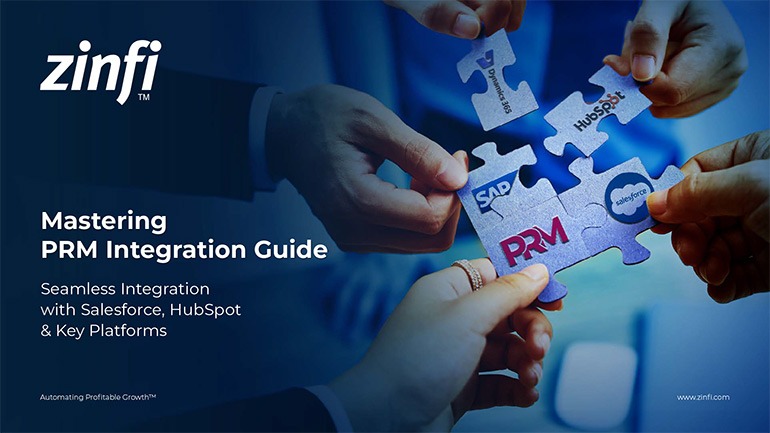Glossary - How to - Co-Branding
How to Leverage the Benefits of Co-Branding?
Introduction
In today’s competitive business landscape, companies continuously seek innovative strategies to enhance their brand value, expand market reach, and increase revenue. One such approach is co-branding, a strategic partnership between two or more brands to create a product or service that benefits all parties involved. Co-branding enables businesses to combine their strengths, leverage each other’s customer base, and establish a presence in the market.
Co-branding is crucial in Partner Relationship Management (PRM), particularly in automating partner engagement and collaboration. Effective co-branding strategies can help companies streamline marketing efforts, enhance brand reputation, and drive partner loyalty. When integrated with PRM automation, co-branding allows organizations to manage brand partnerships, track joint marketing efforts, and measure campaign performance in real time.
Key Takeaways:
Expanded Market Reach
One of the primary benefits of co-branding is the ability to expand market reach by tapping into a partner’s existing customer base. This strategy allows brands to gain exposure to new audiences they may not have accessed otherwise.
- By partnering with an established brand, a company can instantly build credibility and trust with its audience.
- Co-branding enables brands to target complementary market segments, increasing potential leads and conversions.
- Example: Nike and Apple’s collaboration on fitness tracking products allowed both brands to access each other’s customer base and enhance their product offerings.
Enhanced Brand Credibility and Reputation
When two reputable brands collaborate, they reinforce each other’s credibility and improve brand perception among consumers.
- Customers are more likely to trust a co-branded product if they recognize and respect the partnering brands.
- A positive association with a well-known brand can strengthen a company’s positioning in the market.
- Example: Intel’s partnership with major laptop manufacturers, such as Dell and HP, boosts consumer confidence by highlighting the integration of Intel’s trusted processors.
Cost-Effective Marketing and Shared Resources
Co-branding allows businesses to reduce marketing costs and efficiently utilize shared resources.
- Brands can split advertising expenses, reducing individual costs while maximizing exposure.
- Joint marketing campaigns leverage the strengths of both companies, creating more compelling promotional materials.
- For example, McDonald’s and Disney frequently collaborate to promote movies through Happy Meal toys, benefiting both brands while cutting promotional costs.
Increased Competitive Advantage
Co-branding helps businesses gain a competitive edge by combining expertise and unique value propositions.
- Co-branded products often feature innovation that differentiates them from competitors.
- Strategic partnerships create exclusive offerings that appeal to specific consumer needs.
- Example: GoPro and Red Bull’s extreme sports partnership enhances their brand positioning by associating with adventure and high-performance experiences.
Improved Customer Loyalty and Engagement
Successful co-branding strategies enhance customer engagement and encourage long-term loyalty.
- Consumers feel a stronger connection to co-branded products, especially when both brands align with their values and preferences.
- Exclusive product collaborations create excitement and anticipation among loyal customers.
- Example: Starbucks and Spotify’s partnership offers unique benefits to users, such as customized playlists in Starbucks stores, increasing brand engagement.
Summary of Key Takeaways:
Co-branding offers a multitude of benefits, including:
- Expanded market reach by leveraging a partner’s customer base.
- Enhanced brand credibility through association with reputable partners.
- Cost-effective marketing by sharing resources and promotional efforts.
- Increased competitive advantage with unique product offerings.
- Improved customer loyalty by delivering exclusive and engaging experiences.
By integrating co-branding into Partner Relationship Management (PRM) strategies, businesses can optimize collaboration efforts, streamline marketing activities, and maximize the impact of their partnerships.
Industry-Specific Examples:
- Automotive Manufacturing: Co-branding in the automotive sector often involves luxury brands collaborating with technology providers, such as BMW and Apple CarPlay, to enhance user experience and connectivity.
- Consumer Electronics: Samsung and AKG have partnered to offer premium smartphone audio experiences, elevating brand reputation and customer satisfaction.
- Energy Production: Renewable energy providers collaborate with technology firms to promote sustainable solutions, such as Tesla and SolarCity at the solar energy space.
- Financial Services: Visa and PayPal have joined forces to provide seamless payment solutions, enhancing customer convenience and security.
- Food and Beverage: Fast-food chains like Taco Bell and Doritos co-brand products to create unique menu offerings that attract loyal customers.
- Healthcare Services: Fitbit and UnitedHealthcare collaborate to encourage health-conscious behavior through incentives and wearable technology.
- Information Technology: Microsoft and LinkedIn leverage co-branding to integrate professional networking tools within productivity software.
- Pharmaceutical Development: Pharmaceutical companies collaborate with research institutions to develop innovative treatments, as seen in Pfizer and BioNTech’s COVID-19 vaccine collaboration.
- Retail Industry: Target and Lilly Pulitzer frequently co-brand exclusive fashion lines, drawing in a customer base with limited-edition collections.
- Telecommunications: Verizon and Google partner to offer bundled internet and mobile services, enhancing customer convenience and retention.
Conclusion:
Co-branding is a powerful strategy that helps businesses expand market reach, enhance credibility, reduce costs, gain a competitive edge, and improve customer loyalty. By integrating co-branding into Partner Relationship Management (PRM) automation, companies can streamline their joint marketing efforts and track the success of collaborative initiatives. Leveraging co-branding strategically ensures long-term business growth and stronger brand partnerships, making it a vital component in today’s dynamic business environment.
Associated Keywords:
- Co-Branding Strategy Advantages
- How Co-Branding Boosts Brand Value
- Co-branding in Partner Marketing















